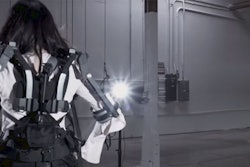As 2017 draws to a close, it’s a good time to reflect on how much the manufacturing industry has evolved and what’s ahead. The impact of these changes — from the more widespread introduction of machine learning and robot workers, to the growth in IoT adoption and application of data — can be seen throughout the industry and beyond. These changes have driven down manufacturing costs, increased production and improved the quality of goods.
In the year ahead, the possibilities for technology’s impact on the industry are endless. One area to watch closely will be how the manufacturing industry treats IoT solutions. In 2017, Verizon found the manufacturing industry saw an 84 percent boost in IoT network connections, which was more than any other industry surveyed, including Transit, Energy & Utilities, Smart Cities and Healthcare. The same report also found that 73 percent of executives are either researching or currently deploying IoT solutions for their businesses.
Though adoption is up, it’s important to examine how companies can use IoT to their benefit, and what may be holding some back from realizing the full potential of IoT in 2018.
IoT’s Role in Manufacturing in 2018
This year was a banner year for IoT — no matter the industry. There was a major boost in the number of connected devices, a trend which is only expected to grow in 2018. In fact, Gartner forecasted the total number of consumer and business connected devices to grow by 11.9 billion by 2018 with vertical-specific business devices rising from 1.64 billion in 2017 to 3.17 billion in 2020. By using IoT to digitize all of their most important assets and processes, manufacturers are hoping to grow their business, increase operational efficiency, and deliver exceptional experiences to customers.
More devices mean more data, so this is a good strategy. The inevitable influx of data that manufacturers are starting to have access to can open big doors for the industry. The range of new tech solutions on the plant floor, along with the wealth of data from connected devices, sensors and real-time analytics, bring a heightened level of connectivity and efficiency to manufacturing. It’s clear that digitization and working to incorporate IoT and the adoption of mobile-first strategies at the core of business operations will allow manufacturers to drive efficiency.
The challenge will be how to seamlessly incorporate device management into the overall manufacturing structure in a way that makes sense and is manageable. Augmented reality (AR) and artificial intelligence (AI) will help to bridge this gap as an intelligent solution. Already AI and robotics have helped manufacturers with things like complex assembly, automation on the floor and improved quality assurance. The year ahead will be no exception.
IoT Pitfalls and How to Avoid Them
Although widespread IoT adoption is essential for future success, there are a number of barriers that manufacturers must overcome to truly realize the benefits of a successful IoT strategy.
Manufacturers struggle with a traditional mindset, as any long-standing industry typically does. They are often focused solely on the inside four walls for the plant, which can hinder their ability to fully adopt and benefit from IoT. With long capital cycles and constrained time and budgets, it’s understandable why manufacturers stick to simpler, easier to deploy technology. For a business to grow however, the industry must take into consideration everything outside of the plant walls and look at the benefits of IoT adoption.
As technology adoption in manufacturing increases, the growing skills gap is also becoming more apparent. There is a need for data scientists who understand the various trends and patterns associated with sensor data flows. A Deloitte study recently found that over the next decade, 2 million manufacturing jobs will go unfilled due to the skills gap. The same study found that 82 percent of executives believe the gap will impact their ability to meet customer demand, highlighting the need for the industry to commit to fixing this gap for the survival of the industry.
Additionally, the manufacturing industry faces challenges with industry decision-makers lacking a full understanding of the IoT, making it difficult to invest in connected solutions for their employees. Even though investments in IoT solutions are increasing, a recent PwC survey found that only 30 percent of US manufacturing executives have plans to increase spending on IT in the coming year. Education on the benefits of IoT from the bottom up needs to take place in order to face the many challenges manufacturers are up against.
Looking to the Future
This time last year, IDC predicted that by 2018, only 30 percent of manufacturers investing in digital transformation would be able to maximize the outcome; the rest would be held back by outdated business models and technology. Though the industry has made significant progress to counteract that claim, there is still more to be done for the industry to realize the full potential of IoT and other emerging technologies.
It’s essential for manufacturers to get up to speed on the realities and the challenges to IoT adoption and embrace the smart, digital solutions that will continue to push the industry forward. The benefits of IoT adoption for the manufacturing industry are undeniable which is why we’ll continue to see IoT speed ahead in 2018.
Michael Kotelec is a global practice leader for Verizon Enterprise Solutions.






















